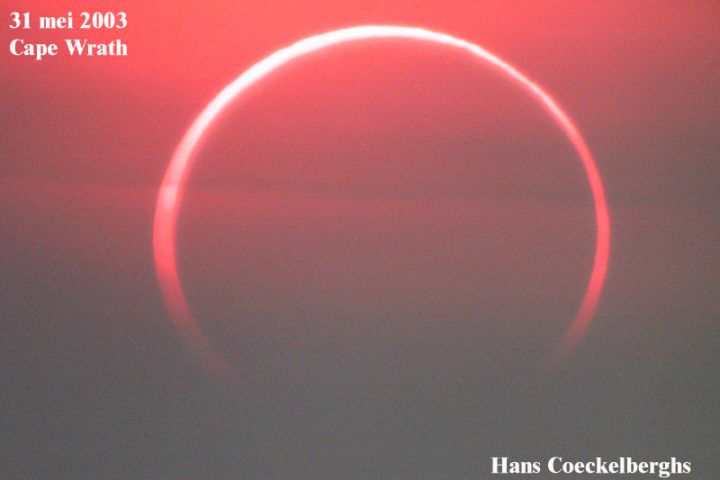
|
Credit & Copyright: Hans Coeckelberghs
Explanation:
If the Moon's apparent
diameter
is not quite large enough to
cover the Sun during a solar eclipse, an annular eclipse
can be the result --
a
spectacle of silhouetted Moon surrounded by a solar "ring of fire".
Just such a view was possible for
observers in the far northern
hemisphere as the
new
Moon slid across the solar disk on May 31st.
Still, for
astronomical
adventurers at Cape Wrath on the
northwestern coast of Scotland, the eastern sky was cloudy on
eclipse day.
But fortunately the Sun became visible a few minutes
prior to the annular phase and determined astronomer Hans
Coeckelberghs was able to capture this dramatic telescopic image
of the
eclipsed Sun's
ring of fire looming through a reddened, cloud-streaked sky.
Not to be outdone by the north, the far southern hemisphere will
host the next solar eclipse, with the path of totality racing
across Antarctica on
November 23rd.
|
January February March April May June July August September October November December |
| |||||||||||||||||||||||||||||||||||||||||||||||||||||||
NASA Web Site Statements, Warnings, and Disclaimers
NASA Official: Jay Norris. Specific rights apply.
A service of: LHEA at NASA / GSFC
& Michigan Tech. U.
Based on Astronomy Picture
Of the Day
Publications with keywords: solar eclipse - annular solar eclipse - Scotland
Publications with words: solar eclipse - annular solar eclipse - Scotland
See also:
